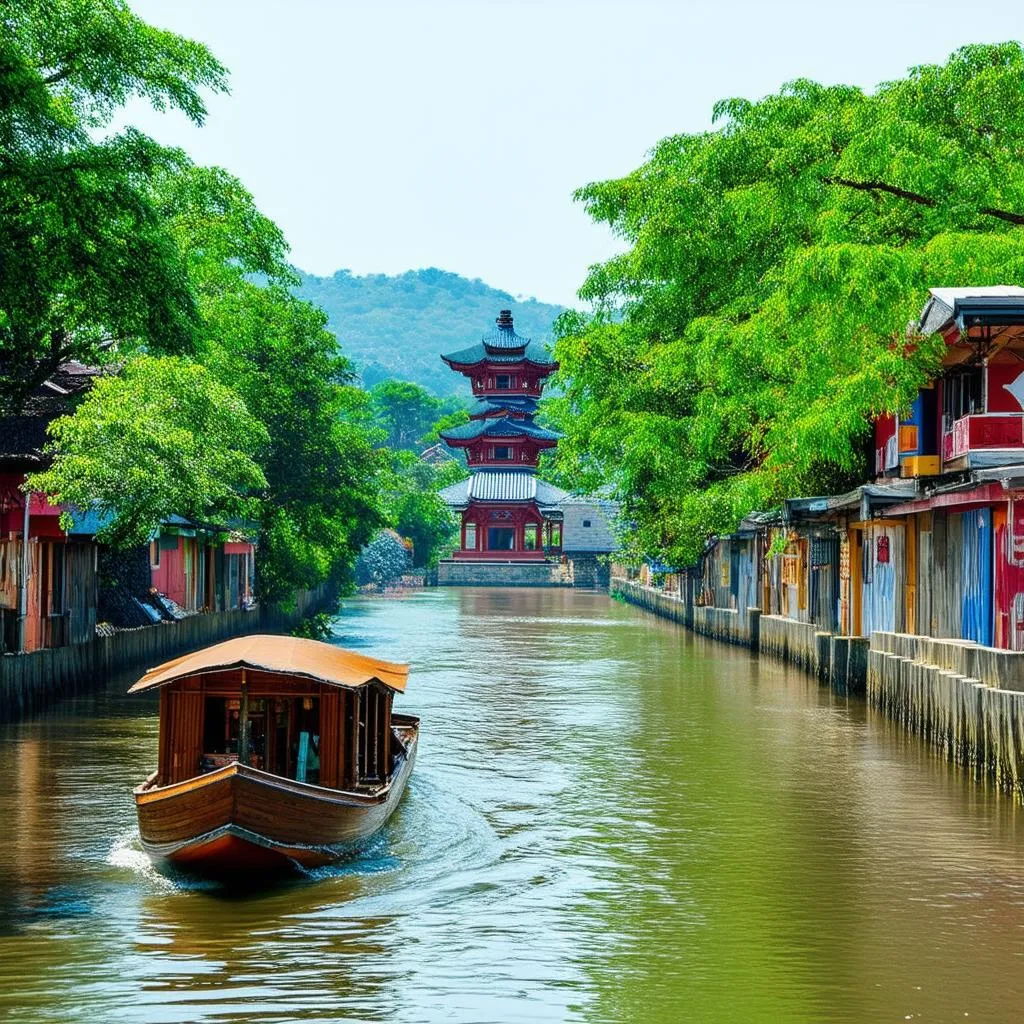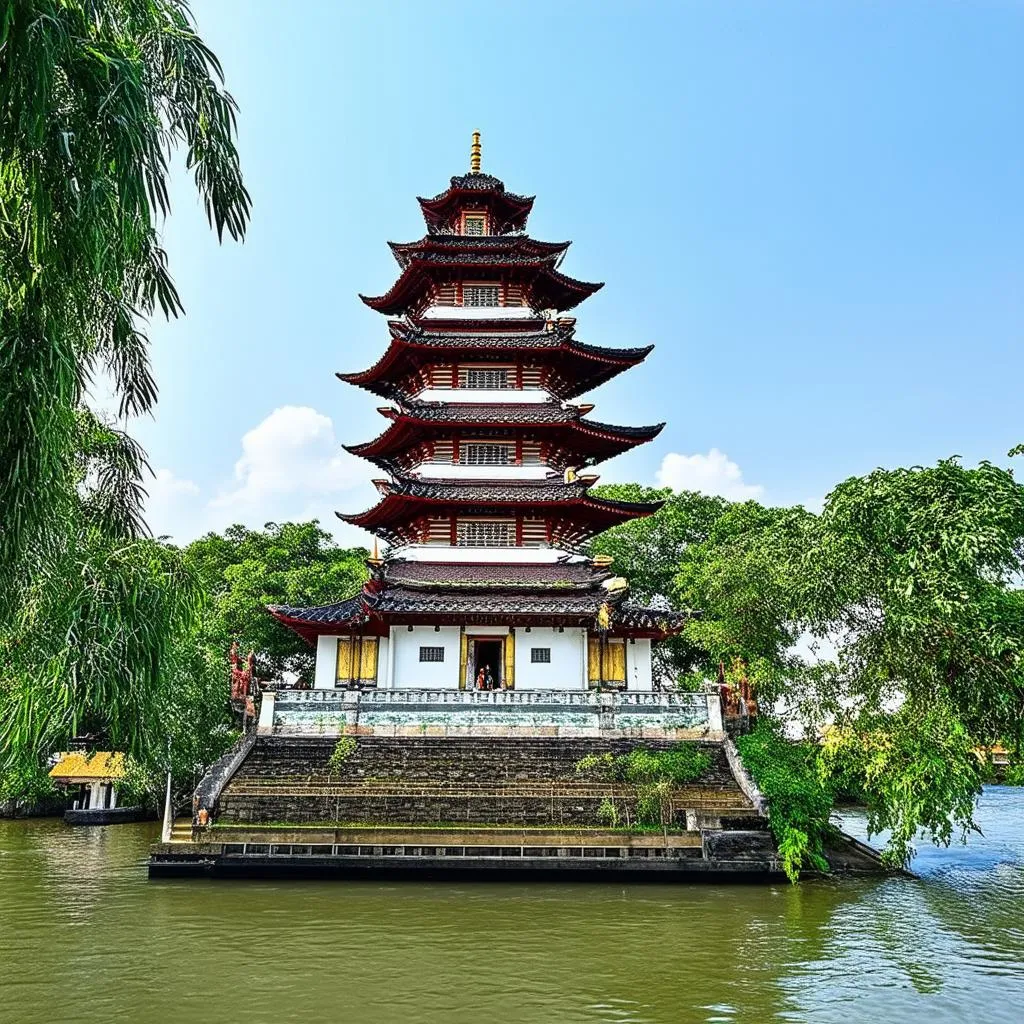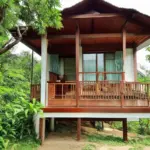Have you ever stepped into a place that feels like a living, breathing poem? That’s Hue for you. Nestled along the banks of the Perfume River, this ancient city, once the imperial capital of Vietnam, is a tapestry woven with history, culture, and breathtaking beauty.
Delving into Hue’s Rich Past
Hue is more than just ancient temples and majestic palaces; it’s a journey back in time. Imagine strolling through the grand halls of the Imperial Citadel, feeling the weight of centuries-old dynasties. Each brick, each gate, whispers stories of emperors and mandarins, of poetry under the moonlight, and the ebb and flow of power.
Exploring the Imperial Citadel
The Imperial Citadel, a UNESCO World Heritage Site, stands as a testament to Vietnam’s Nguyen Dynasty. As you walk through the Ngo Mon Gate, you can almost hear the echoes of processions and feel the anticipation of ceremonies past.
- Tip: Hire a local guide. Their knowledge and stories will truly bring the Citadel to life.
A Spiritual Sojourn to the Royal Tombs
Scattered across the city and beyond lie the Royal Tombs, each a unique reflection of the emperor it houses. The tomb of Emperor Tu Duc, with its serene lake and pine forest, is a testament to his love for nature and the arts.
- Don’t miss: The elaborate architecture and symbolism incorporated into each tomb’s design.
Cruising the Perfume River
No trip to Hue is complete without a gentle boat ride down the Perfume River. As you glide past pagodas and lush landscapes, the scent of frangipani blossoms fills the air, transporting you to another era.
- Did you know? The river earned its name from the aroma of flowers that once drifted downstream from orchards.
 Perfume River Hue
Perfume River Hue
Planning Your Hue Adventure
When to Visit
Hue experiences distinct seasons. Spring (February-April) offers pleasant weather ideal for exploring, while autumn (August-October) sees less rain and comfortable temperatures.
Getting Around
Hue is a walker-friendly city, but for longer distances, cyclos (bicycle taxis) and motorbike taxis are readily available.
Feng Shui and Hue’s Harmony
The principles of Feng Shui, the ancient Chinese art of harmonizing energy, are deeply intertwined with Hue’s layout. The Perfume River, for instance, is believed to bring prosperity, while the surrounding mountains provide protection and grounding energy.
“When choosing a place to stay in Hue,” explains Feng Shui Master Linh Nguyen, author of “Harmony in Design: Feng Shui for Modern Living”, “opt for a hotel with views of the river or mountains to invite positive energy into your travels.”
FAQs About Hue Travel
- What is the best time to visit Hue? Spring (February-April) and Autumn (August-October) offer the most favorable weather.
- Is it easy to get around Hue? Yes, Hue is a walkable city. You can also utilize cyclos, taxis, and motorbikes.
- What should I wear when visiting temples and pagodas? Dress modestly, covering your shoulders and knees.
 Thien Mu Pagoda
Thien Mu Pagoda
Travelcar.edu.vn: Your Gateway to Hue
For an unforgettable journey through time, explore the treasures of Hue. And for expert travel advice, tips, and insights on Vietnamese culture, visit travelcar.edu.vn. Discover more about Hue’s rich cultural tapestry in our article about cultural tourism in Hue.
Let TRAVELCAR.edu.vn be your guide as you plan your next adventure. We offer a wealth of information on everything from travel companies in Hue to exploring the wonders of Vietnam.
Embrace the Magic of Hue
From the grandeur of the Imperial City to the tranquility of the Perfume River, Hue offers a journey for the soul. Come, lose yourself in its timeless beauty, and discover the magic that awaits you in the heart of Vietnam.
Have you ever been captivated by a city’s history? Share your travel experiences in the comments below!

